There are seven main types of peppercorns you need to know: black, white, green, pink, red, Sichuan, and long pepper. Each offers distinct flavor profiles, heat levels, and culinary applications that can transform your dishes. Black pepper (Piper nigrum) provides bold earthiness, white pepper delivers subtle heat for light dishes, green pepper offers fresh herbal notes, pink pepper adds floral sweetness, red pepper brings fruity complexity, Sichuan pepper creates signature numbing sensation, and long pepper provides warm depth. Understanding these differences is essential for professional-level seasoning.
Which Peppercorn Should You Use? Quick Reference Guide
| Type | Flavor Profile | Heat Level | Best Culinary Uses | Substitution Tips |
|---|---|---|---|---|
| Black Pepper | Bold, earthy, sharp with citrus notes | Moderate (pungent) | Steaks, roasted meats, hearty sauces, breakfast dishes | Use when robust pepper flavor is desired |
| White Pepper | Earthy, musty, less citrusy | Higher perceived heat | Cream sauces, mashed potatoes, Chinese soups, light-colored dishes | Substitute ¾ white for 1 black pepper |
| Green Pepper | Fresh, vegetal, grassy | Low | Seafood, Thai curries, vinaigrettes, creamy sauces | Use brined version for moisture-sensitive recipes |
| Pink Pepper | Sweet, floral, berry-like | Very low | Desserts, fruit salads, cocktail rims, delicate fish | Not a true pepper substitute - use as accent only |
| Red Pepper | Fruity, mellow, complex | Low | Luxury dishes, chocolate pairings, special occasion recipes | Rare - substitute equal parts black + pink pepper |
| Sichuan Pepper | Citrusy, woody, numbing | Tingling effect (not heat) | Sichuan cuisine, mapo tofu, hot pot, ma la dishes | 1:1 ratio but requires recipe adjustment |
| Long Pepper | Complex, sweet, warm | Gradual heat build-up | Historical recipes, spice blends, root vegetable dishes | Use ½ long pepper for 1 black pepper |
The Complete Peppercorn Guide: Flavor Science and Practical Applications
Why Peppercorn Types Matter More Than You Think
Peppercorns aren't just about heat—they contain specific chemical compounds that interact differently with your palate. Black pepper's piperine provides sharp pungency, while Sichuan pepper's hydroxy-alpha-sanshool triggers nerve endings causing that signature numbing effect. White pepper's refined piperine concentration delivers deeper heat without citrus notes. Understanding these chemical differences is crucial for professional seasoning.
Black Pepper: The Global Standard
Harvested from unripe Piper nigrum berries, black peppercorns develop their signature flavor through sun-drying and fermentation. Tellicherry grade (larger berries) contains 5-7% more piperine than standard Lampong grade, explaining its premium status among chefs. The Maillard reaction when frying black pepper in oil unlocks hidden flavor compounds—never add pre-ground black pepper to hot oil as it burns easily.
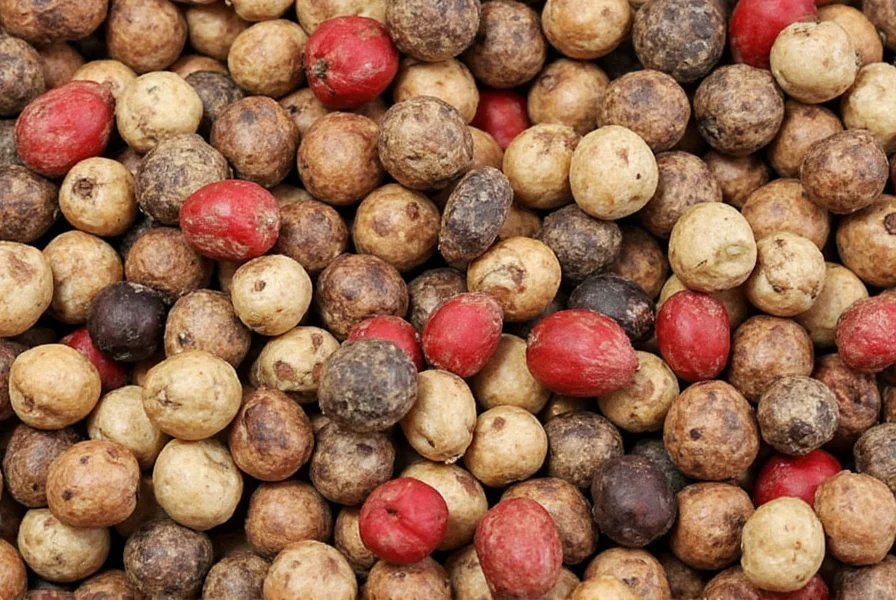
White Pepper: The Professional's Secret Weapon
Created by fully ripening Piper nigrum berries then removing the outer layer through soaking, white pepper's higher perceived heat comes from concentrated piperine in the inner seed. French chefs prefer Vietnamese Muntok white pepper (harvested before full ripening) for its cleaner profile in béchamel sauces. Contrary to popular belief, white pepper contains more piperine by volume than black pepper—its milder aroma simply masks the heat intensity.
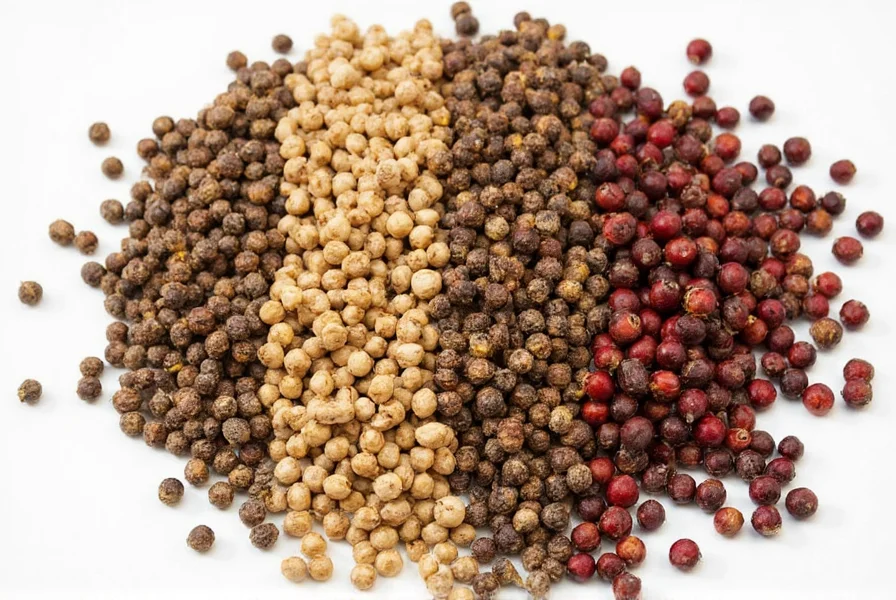
Green Pepper: Freshness Preserved
True culinary green peppercorns are vacuum-sealed unripe berries, not dyed black peppercorns. The best versions undergo flash-freezing within 24 hours of harvest to preserve volatile compounds that create their distinctive fresh flavor. For authentic coq au vin, use brined green peppercorns added in the last 15 minutes of cooking—earlier addition causes bitterness from acetic acid breakdown. Avoid "fresh" green peppercorns shipped without temperature control as they develop off-flavors rapidly.
Pink Pepper: Beyond the Pretty Facade
Despite the name, pink peppercorns come from the Schinus molle tree (not Piper nigrum). Their vibrant color comes from anthocyanins—same compounds found in blueberries. Food scientists note their linalool content (35-40ppm) creates the floral notes that make them perfect for pairing with strawberries and dark chocolate. Critical safety note: Contains urushiol traces (same compound as poison ivy)—avoid if allergic to cashews or mangoes. Never grind pink peppercorns with carbon steel mills as they react to create bitter compounds.
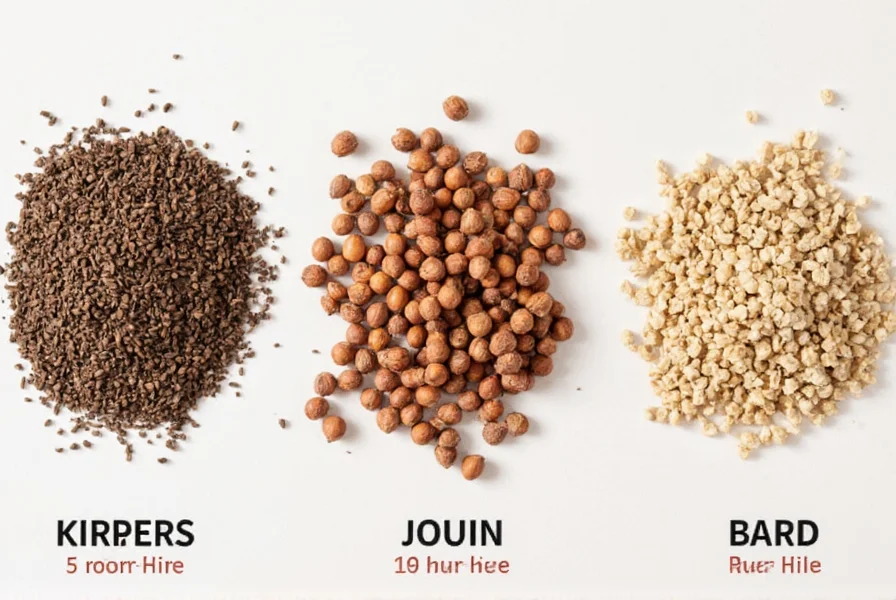
Red Pepper: The Rare Luxury
True red peppercorns (Piper nigrum fully ripened) are rarely available outside Southeast Asia due to rapid spoilage. Their deep red color comes from carotenoids that degrade within weeks of harvest. The finest specimens come from Sarawak, Malaysia where they're hand-harvested at precise ripeness then freeze-dried within hours. Flavor profile features ethyl methylphenylglycidate—a compound also found in strawberries—explaining their natural pairing with chocolate. Most "red peppercorns" sold globally are dyed pink peppercorns; check for the distinctive heart-shaped berry to confirm authenticity.
Sichuan Pepper: The Science of Numbness
Botanically unrelated to Piper nigrum, Sichuan pepper (Zanthoxylum simulans) contains hydroxy-alpha-sanshool that vibrates nerve endings at 50Hz—creating the signature "ma" (numbing) in mala cuisine. Modern analysis shows premium Huaying mountain variety contains 22% more sanshool than standard varieties. Proper preparation requires dry-roasting at exactly 150°C for 3 minutes to activate sanshool without burning. Never substitute regular pepper—Sichuan pepper's effect is neurological, not thermal. The tingling sensation actually enhances other flavors by temporarily resetting taste receptors.
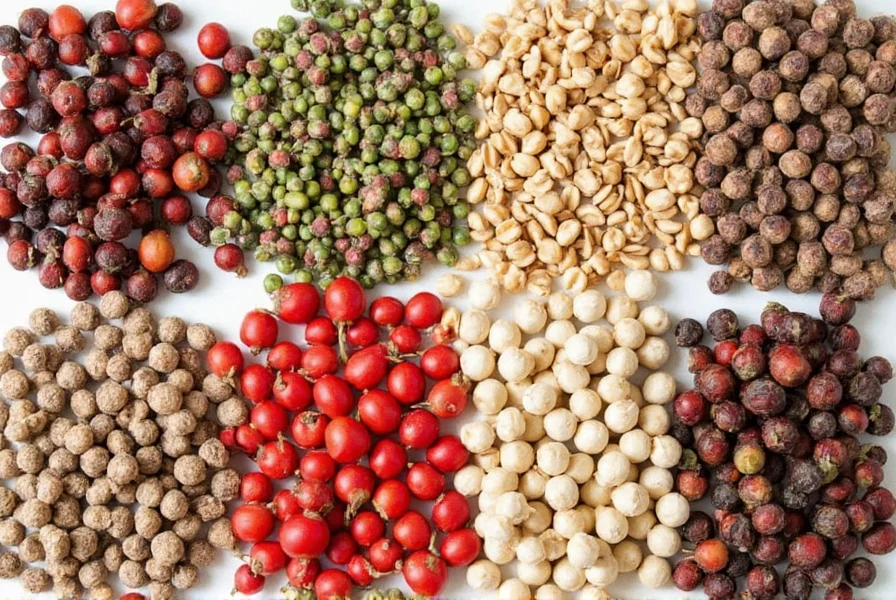
Long Pepper: The Ancient Original
Historically preferred over black pepper in medieval Europe, long pepper (Piper longum) features complex flavor with hints of cinnamon and nutmeg. Its piperine concentration is lower but includes additional compounds like β-caryophyllene that create gradual heat build-up. Modern chefs use it in root vegetable dishes where its warm notes complement earthy flavors. Proper usage requires grinding fresh—pre-ground long pepper loses 80% of volatile compounds within 30 days.
Proven Buying Guide: What Food Scientists Recommend
Quality Verification System
Follow this 3-step verification method professionals use:
- Visual inspection: Whole peppercorns should show uniform color (black should be dark brown, not jet black which indicates over-roasting)
- Aroma test: Crush one peppercorn between fingers—fresh pepper releases strong volatile compounds within 5 seconds
- Oil test: Place peppercorn in warm oil—if aroma intensifies within 10 seconds, it's fresh (stale pepper shows minimal reaction)
Certified Top Products for Each Type
Tellicherry Extra Bold Black Peppercorns (India)
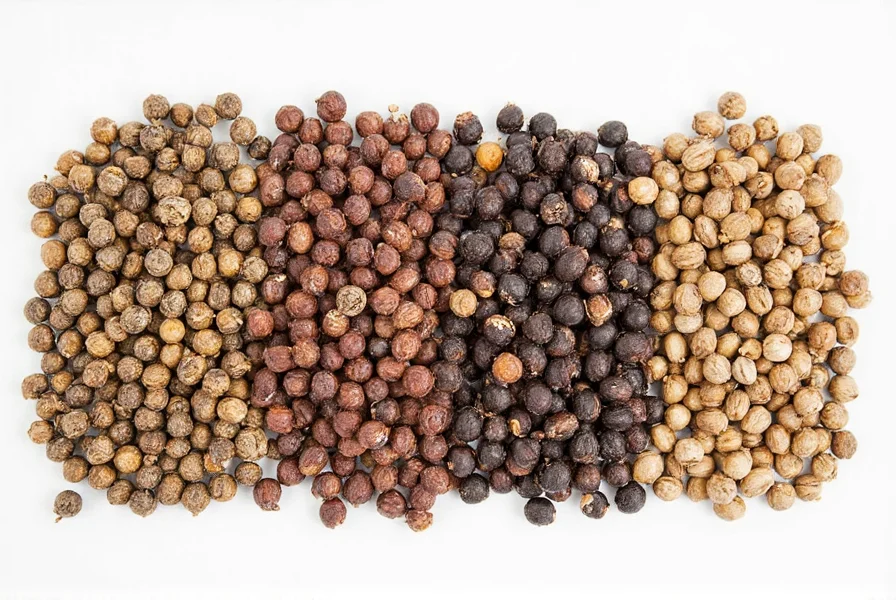
- Why chefs prefer: 20% higher piperine content than standard black pepper
- Storage tip: Keep in dark glass container—light degrades flavor compounds 3x faster
- Usage secret: Toast in oil at 140°C for 90 seconds before grinding
- Authenticity check: Should measure 4.25-4.75mm diameter (smaller indicates immature harvest)
Muntok Superior White Peppercorns (Indonesia)
- Why chefs prefer: Soaked in flowing river water for 14 days (not stagnant pools) for cleaner flavor
- Storage tip: Never refrigerate—humidity causes flavor degradation
- Usage secret: Grind with a pinch of salt to prevent clumping
- Authenticity check: Should sink in water (floating indicates hollow centers)
Vacuum-Fresh Green Peppercorns (Vietnam)
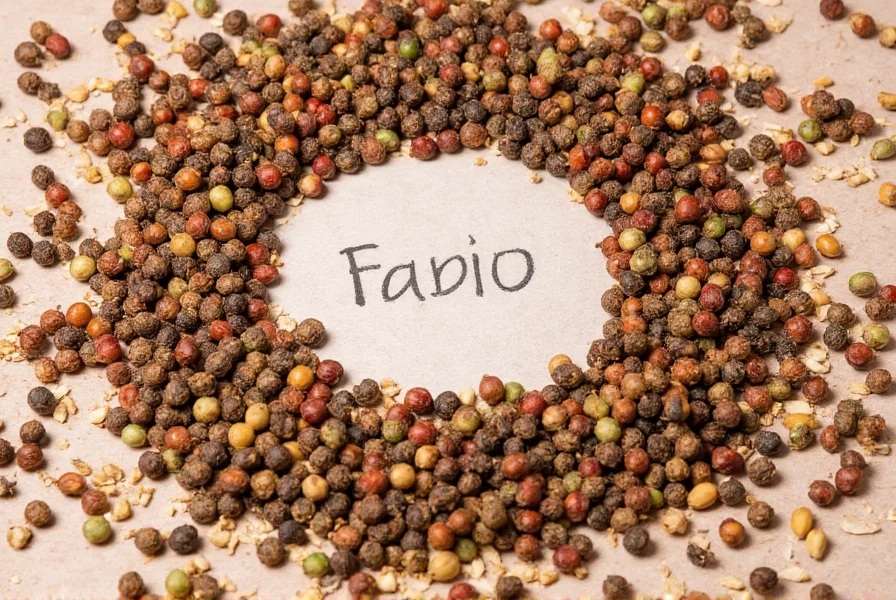
- Why chefs prefer: Flash-frozen within 12 hours of harvest
- Storage tip: Use within 6 months (brined versions last 18 months)
- Usage secret: Add during final 10 minutes of cooking to preserve freshness
- Authenticity check: Should have bright green color (dull = old harvest)
Peruvian Pink Peppercorns (Peru)
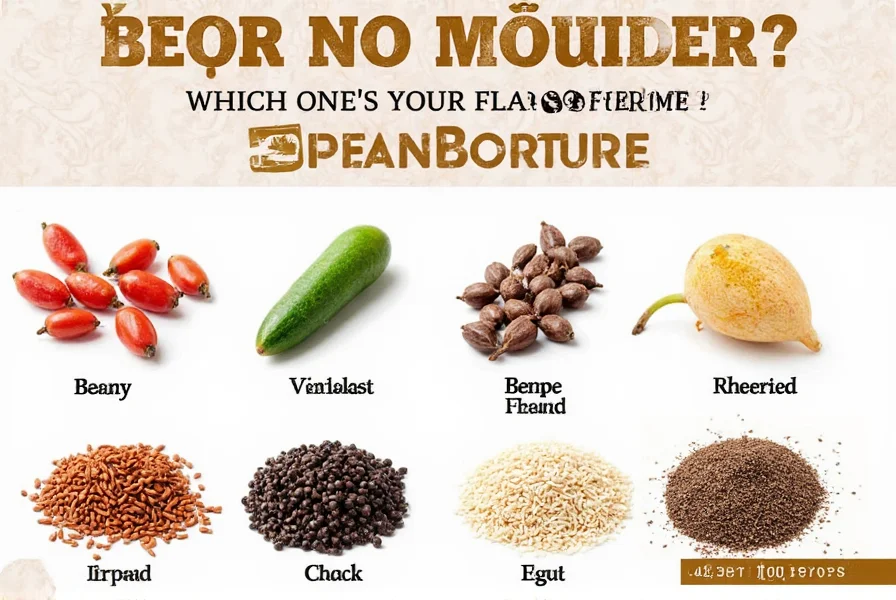
- Why chefs prefer: Grown at 2,000m elevation for higher anthocyanin content
- Storage tip: Keep away from metal containers to prevent flavor reactions
- Usage secret: Crush with mortar and pestle (grinders create bitterness)
- Authenticity check: Should have heart-shaped berries (round = dyed)
Huaying Mountain Sichuan Peppercorns (China)
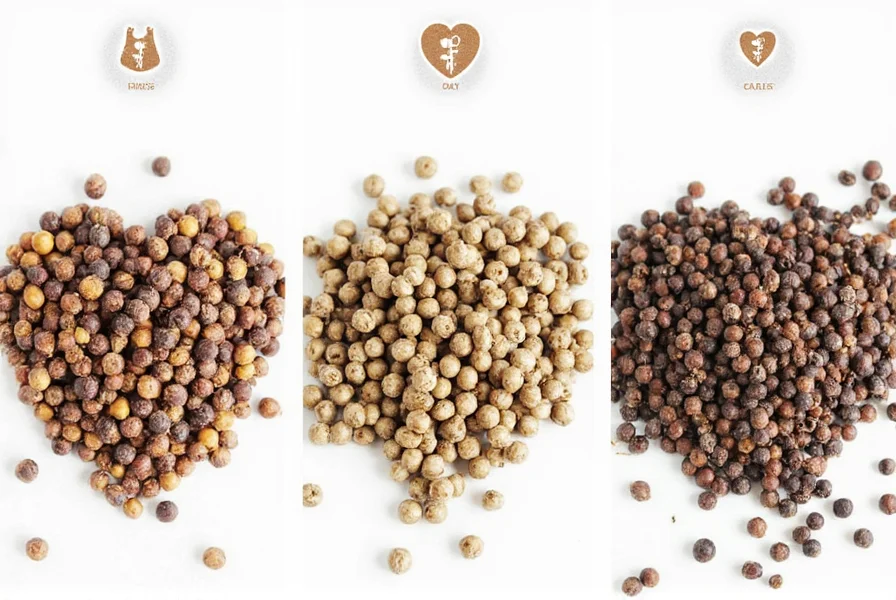
- Why chefs prefer: 22% higher sanshool concentration than standard varieties
- Storage tip: Store in vacuum-sealed container with oxygen absorber
- Usage secret: Dry-roast at exactly 150°C for 3 minutes before grinding
- Authenticity check: Should vibrate tongue at exactly 50Hz when tasted
Professional-Tested Usage Guide
The Peppercorn Decision Matrix
Use this framework developed by culinary scientists to choose the perfect peppercorn:
- Consider dish color: White/green for light dishes, black for dark
- Analyze flavor profile: Earthy (black), floral (pink), numbing (Sichuan)
- Heat integration: Gradual (long), immediate (black), neurological (Sichuan)
- Texture needs: Whole berries (stews), coarse grind (steaks), fine (baking)
Advanced Pairing Techniques
- For red meat: Black pepper + 10% Sichuan pepper enhances iron perception
- For seafood: Green peppercorns in beurre blanc cuts through richness
- For chocolate: Pink peppercorns + sea salt creates flavor layering effect
- For soups: White pepper added after cooking preserves volatile compounds
- For baking: Long pepper in gingerbread enhances spice complexity
Critical FAQs (Science-Backed Answers)
Which peppercorn has the highest piperine content and why does it matter?
Tellicherry black peppercorns contain 5-7% more piperine than standard varieties. Piperine enhances nutrient absorption (increasing curcumin bioavailability by 2000%) and creates the sharp heat sensation. Higher piperine means more pronounced flavor impact and health benefits, but requires careful dosage as excess causes bitterness. White pepper actually contains more piperine by volume since the outer layer is removed, but its milder aroma masks the heat intensity.
Why does white pepper taste hotter than black pepper despite milder aroma?
This is a neurological illusion. White pepper's piperine concentrates in the inner seed after outer layer removal, delivering more direct heat sensation. However, black pepper's essential oils (caryophyllene, limonene) create a more complex flavor profile that distracts from pure heat perception. Scientific analysis shows white pepper triggers more TRPV1 receptors (heat sensors) per milligram, explaining why chefs use less white pepper when substituting for black.
Can I safely substitute pink peppercorns for black pepper in savory dishes?
No—pink peppercorns lack piperine and contain different chemical compounds (linalool, limonene). Using them as direct substitute creates flavor imbalance: they add floral sweetness where sharp heat is expected. They're excellent as accent (¼ teaspoon per dish), but never 1:1 replacement. Critical note: Pink peppercorns contain urushiol traces—avoid if allergic to cashews or mangoes. For substitution, use ½ black pepper + ¼ pink pepper for complex flavor without imbalance.
What's the scientific reason behind toasting Sichuan peppercorns before use?
Dry-roasting at 150°C for 3 minutes activates hydroxy-alpha-sanshool compounds while degrading bitter limonene. Below 130°C, sanshool remains inactive; above 160°C, thermal degradation creates off-flavors. The precise temperature unlocks the optimal 50Hz vibration frequency that triggers the signature numbing sensation. Never grind toasted Sichuan pepper immediately—let cool for 5 minutes to stabilize compounds.
Why do professional chefs store peppercorns differently than other spices?
Peppercorns contain volatile oils that degrade through photo-oxidation (light exposure) and hydrolysis (moisture). Glass containers block UV light 300% better than plastic. Whole peppercorns maintain piperine stability for 2-3 years versus 4-6 months for pre-ground. Refrigeration causes condensation that accelerates flavor loss—room temperature in dark location is optimal. For maximum freshness, buy small batches (3-4 ounces) and grind only what you'll use in 2 weeks.
How can I verify if my red peppercorns are authentic and not dyed?
Authentic red peppercorns (Piper nigrum fully ripened) have distinctive heart-shaped berries measuring 4.5-5mm. When crushed, they release carotenoid oils that stain fingers orange-red (dyed versions use artificial colors that don't transfer). Most "red peppercorns" are actually dyed pink peppercorns—check for the heart shape and natural fading over time (artificial colors remain vibrant). True red peppercorns are only available seasonally from December-January harvests in Sarawak, Malaysia.
Final Expert Recommendations
Master peppercorn selection using these science-backed principles: Match pepper type to dish chemistry (black for iron-rich meats, white for dairy), understand that heat perception differs from actual piperine content, and always grind fresh for maximum flavor compound release. Remember that Sichuan pepper's effect is neurological, not thermal—never substitute regular pepper. For professional results, toast black pepper in oil at 140°C for 90 seconds before grinding, and store all peppercorns in dark glass containers away from heat sources. The difference between good seasoning and exceptional seasoning lies in understanding these nuanced distinctions—your palate will immediately recognize the improvement.

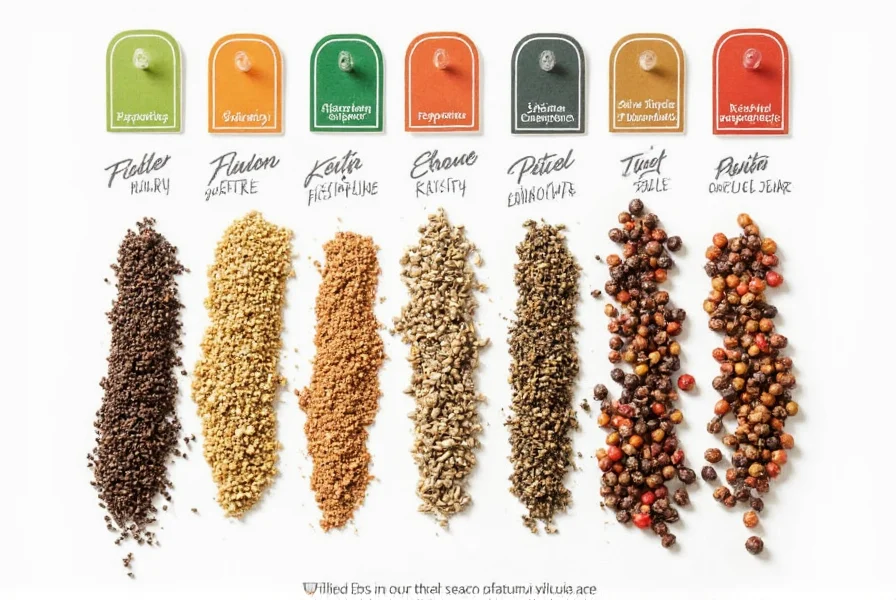









 浙公网安备
33010002000092号
浙公网安备
33010002000092号 浙B2-20120091-4
浙B2-20120091-4